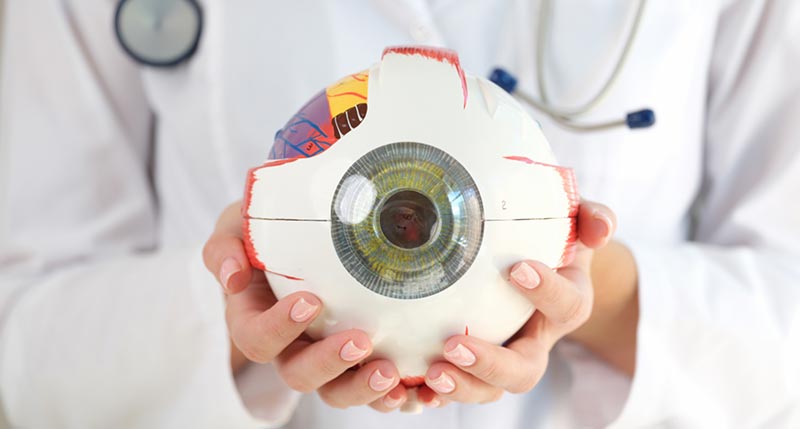Discover a Neurologist in Andalusia: Specialized Clinics and Care Providers
Discover a Neurologist in Andalusia: Specialized Clinics and Care Providers
Blog Article
The Benefits And Drawbacks of Various Refractive Surgeries for Boosted Eyecare

LASIK Surgical Procedure
LASIK surgical procedure is a typically carried out refractive treatment that aims to correct vision issues such as nearsightedness, astigmatism, and farsightedness. This medical strategy has actually gained popularity due to its effectiveness in providing patients with more clear vision and decreasing their reliance on glasses or get in touch with lenses. Throughout the procedure, a thin flap is produced on the cornea, and a laser is used to reshape the underlying cells, remedying the refractive mistake. The flap is after that repositioned, permitting for quick healing and minimal discomfort for the client.
Among the primary advantages of LASIK surgical treatment is the fast improvement in vision experienced by many individuals. Many people observe a substantial enhancement in their eyesight quickly after the treatment, with very little downtime required for recovery. Additionally, LASIK is understood for its high success price and low incidence of issues when done by knowledgeable specialists. Like any kind of medical treatment, LASIK additionally brings some threats, consisting of dry eyes, glare, halos, and under or overcorrection of vision. It is essential for people taking into consideration LASIK surgical procedure to go through a complete assessment by an eye treatment specialist to establish if they appropriate candidates for the procedure.
PRK Procedure
The PRK treatment, also recognized as Photorefractive Keratectomy, is a type of refractive surgical treatment that aims to remedy vision issues similar to LASIK surgical procedure. Unlike LASIK, which involves creating a flap in the cornea, PRK functions on the surface area layer of the cornea. During the PRK treatment, the external layer of the cornea, called the epithelium, is eliminated to allow improving of the underlying corneal cells with an excimer laser. This reshaping helps to remedy refractive mistakes such as farsightedness, nearsightedness, and astigmatism.
One of the benefits of PRK over LASIK is that it gets rid of the danger of flap-related problems considering that no flap is produced throughout the surgery. Despite the longer healing period, PRK can be an ideal option for individuals looking for vision improvement surgical treatment.
SMILE Surgical Treatment
An innovative refractive surgical procedure strategy obtaining popularity in the field of ophthalmology is SMILE Surgical treatment. Little Incision Lenticule Removal (SMILE) is a minimally invasive procedure that remedies vision by reshaping the cornea using a femtosecond laser. Unlike conventional LASIK surgery, SMILE Surgery entails developing a little cut in the cornea to remove a lenticule, which causes less disturbance to the corneal structure and potentially quicker recovery times.
One of the key advantages of SMILE Surgical treatment is its capability to deal with nearsightedness (nearsightedness) and astigmatism with high precision, resulting in exceptional visual results for clients. The minimally intrusive nature of the procedure additionally decreases the risk of difficulties such as dry eye disorder, making it a beneficial alternative for people seeking refractive surgical procedure.

LASEK Strategy
Having explored the benefits and factors to consider of SMILE Surgery, an additional notable refractive surgery technique worth taking a look at is the LASEK Technique. LASEK, which means Laser-Assisted Subepithelial Keratectomy, is a type of laser eye surgery that aims to correct refractive mistakes such as nearsightedness (nearsightedness), hyperopia (farsightedness), and astigmatism.
Unlike LASIK, LASEK does not include producing a corneal flap. Instead, during a LASEK procedure, the surgeon makes use of a diluted alcohol option to loosen up the slim external layer of the cornea, understood as the epithelium.
One of the primary benefits of LASEK is that it can be appropriate for individuals with thin corneas that might not be good candidates for LASIK. In addition, LASEK normally causes very little post-operative discomfort and a quicker recuperation time compared to PRK. The aesthetic recovery process with LASEK may be somewhat longer than with LASIK.
Implantable Get In Touch With Lenses
Implantable Contact Lenses use a long-lasting vision modification remedy for individuals looking for a choice to traditional contact lenses or glasses. These lenses, also referred to as phakic intraocular lenses, are operatively placed right into the eye to remedy refractive mistakes such as myopia (nearsightedness), hyperopia (farsightedness), and astigmatism. neurologist Andalusia. Unlike traditional contact lenses that remain on the surface area of the eye, implantable get in touch with lenses work within the eye itself, supplying clear vision without the need for day-to-day maintenance or elimination
One of the crucial benefits of implantable call lenses is their permanence. Once put, they can continue to be in the eye indefinitely, using secure and regular vision modification. In addition, these lenses can be a superb option for individuals that are not great prospects for laser eye surgical procedure or that favor a reversible go to my blog vision improvement procedure.
However, implantable get in touch with lenses do bring some threats, consisting of the potential for cataracts or enhanced eye pressure. It is Related Site important for people considering this option to talk to an eye care expert to identify if implantable get in touch with lenses are the right option for their certain demands and eye health and wellness.
Conclusion
In verdict, each kind of refractive surgical treatment has its own advantages and negative aspects. LASIK surgical treatment is prominent for its fast recovery time, while PRK procedure may appropriate for individuals with thin corneas. SMILE surgery provides minimal discomfort throughout the treatment, yet LASEK strategy may have a longer healing procedure. Implantable get in touch with lenses give an option for those who are not appropriate candidates for typical surgical treatments. Patients should seek advice from their eye treatment provider to identify the ideal alternative for their private requirements.

In General, SMILE Surgical procedure offers an encouraging alternative for people looking to boost their vision with refractive surgery.
Report this page